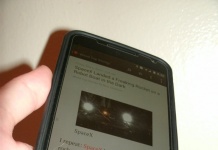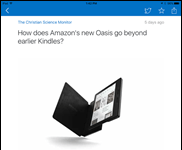![twitter_logo_thumb[1] twitter_logo_thumb[1]](http://www.teleread.com/wp-content/uploads/2010/09/twitter_logo_thumb1_thumb.png) Adrianne Jeffries at ReadWriteWeb has an interesting piece looking at how the focus of Twitter has shifted over the years. It started out as a way to communicate with friends, sort of instant messaging on a time delay, but its role has changed considerably as more and more people began using it as a way to share links they found interesting—and more and more media sources began making it easy to share links via Twitter.
Adrianne Jeffries at ReadWriteWeb has an interesting piece looking at how the focus of Twitter has shifted over the years. It started out as a way to communicate with friends, sort of instant messaging on a time delay, but its role has changed considerably as more and more people began using it as a way to share links they found interesting—and more and more media sources began making it easy to share links via Twitter.
Now, Jeffries writes:
Twitter is increasingly about news, content and information in an easily-digestible format. By delivering real-time updates curated by individuals and publishers of your choosing, Twitter ended up in the same space as RSS readers and social bookmarking sites like Del.icio.us. And people liked Twitter better.
Twitter, Jeffries explains, is a new way to “curate the web”. You can share links to stories you like with short, enticing descriptions. You can share links to your own journal or blog posts, your favorite YouTube videos, and of course the news, And thanks to the web capabilities built into a lot of the new Twitter clients (not to mention the gorgeous-looking link aggregation ability of Flipboard), people can view these stories without ever having to open a web browser directly.
Even media outlets are getting in on the act directly. I’ve noticed (and complained) that the #sgf Twitter hashtag, originally meant to for discussion about things local to my hometown of Springfield, Missouri, has almost entirely been hijacked by local newspapers and TV stations posting links to their stories in it.
On a related note, Sarah Perez has another ReadWriteWeb piece covering a presentation by Twitter VP Kevin Thau. Thau explains that Twitter is not actually a social network, but rather a distribution system for news, content, and information.
"The guy who saw a plane land on the Hudson River right in front of him didn’t think to send an email," says Thau. "He tweeted it."
Certainly, Twitter’s executives have not been slow to grasp what is going on.
I find it interesting that Twitter is essentially becoming a backchannel, makeshift news aggregator. I wonder if a more likely future model for e-newspaper reading than websites might be Flipboard-style Twitter feed channels?

































Until recently my source of news was through RSS feeds. Then I obtained an iPad and Flipboard is now my favorite way to read the news. For me, Twitter is simply a news aggregator and using a combination of Flipboard and Instapaper is the best way I have found to read my feeds.
I agree. I don’t really care to share my opinion with the “Twitterverse.” I just use it to aggregate news, and I use the list function to categorize my news feeds… “Breaking News,” “Science and Technology,” “Politics,” etc.
It’s purely an information consumption device for me. And the brevity of each tweet makes me able to consume more efficiently.